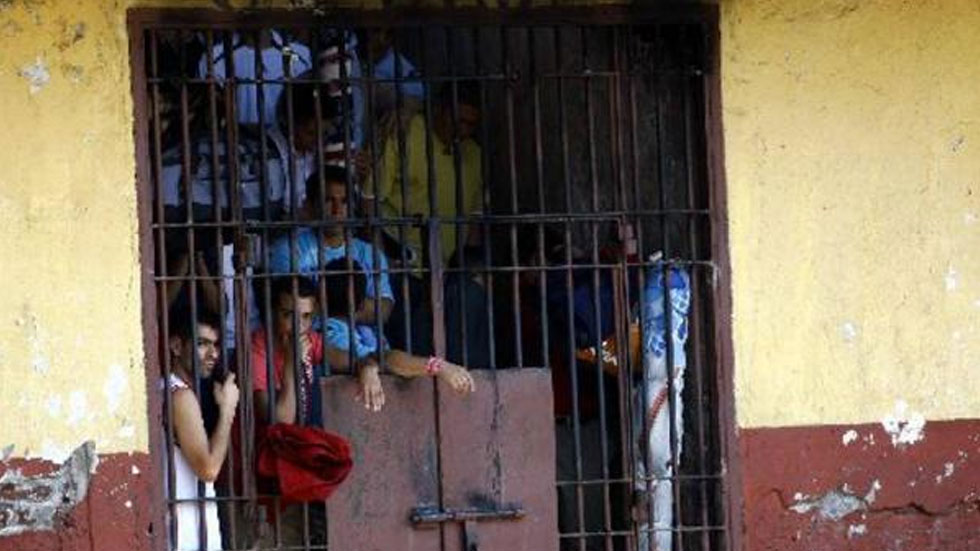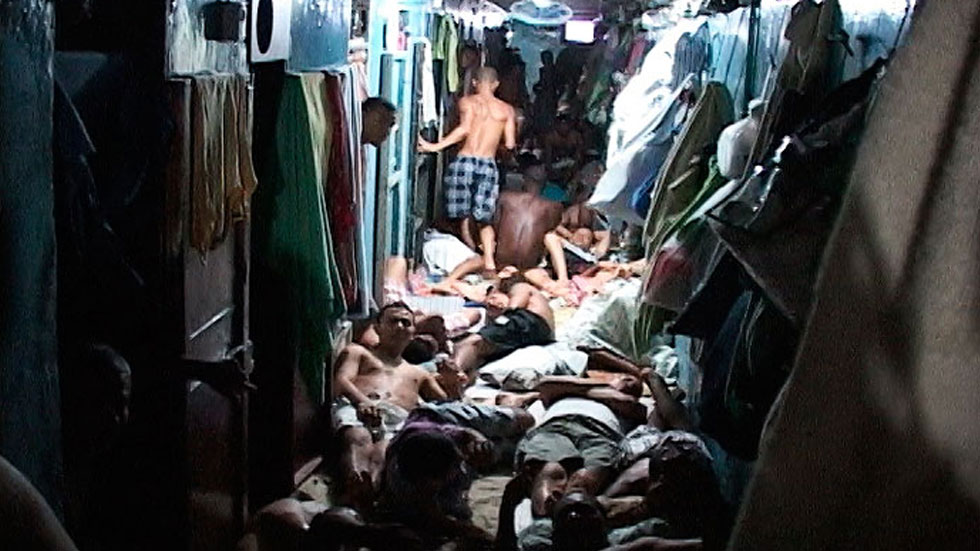Judi Lynn
Judi Lynn's JournalIn Guatemala, Indigenous Communities Prevail Against Monsanto
In Guatemala, Indigenous Communities Prevail Against Monsanto
Wednesday, 12 November 2014 00:00
By Jeff Abbott, Waging Nonviolence | Report
Late in the afternoon of September 4, after nearly 10 days of protests by a coalition of labor, indigenous rights groups and farmers, the indigenous peoples and campesinos of Guatemala won a rare victory. Under the pressure of massive mobilizations, the Guatemala legislature repealed Decree 19-2014, commonly referred to as the “Monsanto Law,” which would have given the transnational chemical and seed producer a foot hold into the country’s seed market.
“The law would have affected all indigenous people of Guatemala,” said Edgar René Cojtín Acetún of the indigenous municipality of the department of Sololá. “The law would have privatized the seed to benefit only the multinational corporations. If we didn’t do anything now, then our children and grandchildren would suffer the consequences.”
Originally passed on June 26, the Monsanto Law was written to protect the intellectual property rights of multinational companies in their investments within Guatemala. The law also allowed Monsanto an entrance into the Guatemalan seed market and set in place stiff penalties for any farmer that was caught selling seed to another farmer without the proper permits. The response was a massive mobilization of a coalition of labor, indigenous groups and campesinos.
For 10 days, the streets in front of the legislature of the capital Guatemala City were clogged with thousands of protesters demanding the repeal of the law. Demonstrators also gathered in the rural departments of Guatemala to protest the law and the congressmen who had voted in favor of the law.
More:
http://www.truth-out.org/news/item/27395-in-guatemala-indigenous-communities-prevail-against-monsanto
Rape, abortion ban drives pregnant teens to suicide in El Salvador
Rape, abortion ban drives pregnant teens to suicide in El Salvador
Anastasia Moloney
SAN SALVADOR — Reuters
Published Wednesday, Nov. 12 2014, 4:04 AM EST
Last updated Wednesday, Nov. 12 2014, 4:06 AM EST
El Salvador’s ban on abortion is driving hundreds of girls who become pregnant after being raped to commit suicide every year because they see no other option, a government official said.
Teenage pregnancy is one of the leading causes of suicide in the Central American country of 6 million people. Three out of eight maternal deaths in El Salvador are the result of suicide among pregnant girls under 19, latest government figures show.
Many of these girls have not only suffered sexual abuse at the hands of relatives, stepfathers or gang members, but they are also often silenced and prevented from seeking help by the stigma surrounding rape.
On top of that, they face the unwelcome prospect of giving birth to an unwanted baby due to El Salvador’s total ban on abortion even in cases of rape, incest, a deformed foetus or when the women’s life is in danger, campaigners say.
“There is stigma and fear in reporting rape that occurs in families,” said Mario Soriano, a doctor who heads the programme for youth and adolescent development at El Salvador’s health ministry.
More:
http://www.theglobeandmail.com/news/world/rape-abortion-ban-drives-pregnant-teens-to-suicide-in-el-salvador/article21551467/
The Six Jesuit Scholars and the American War on Self-Determination
The Six Jesuit Scholars and the American War on Self-Determination
by Matt Peppe / November 12th, 2014
Twenty-five years ago this week, six Jesuit scholars at the Universidad Centroamericana (UCA) in El Salvador opened the doors of their residence to members of a government death squad, who had been armed and trained by the United States. The soldiers marched the priests to the back garden. They were ordered to lie face down. They were shot and killed like dogs along with their housekeeper and her teenage daughter.
Father Ignacio Ellacuría Bescoetxea, one of the six Jesuits executed that night, had been a vocal advocate for a negotiated political settlement to the war that had devastated the small Central American country over the course of the decade. On November 16, 1989, Ellacuría would become one of the more than 75,000 killed in the brutal violence carried out by the military dictatorship.
The ruling junta was the beneficiary of billions in military aid from the United States government, which they received for their efforts to suppress a populist rebellion by the Farabundo Martí National Liberation Front (FMLN).
Nine years earlier, Archbishop of San Salvador Oscar Romero had been gunned down at the altar by a death squad member while he was in the middle of celebrating Mass. Before his assassination, Romero had sent a letter to President Jimmy Carter pleading with him to stop sending military aid to the Salvadoran military junta. Romero made his case to Carter “because you are a Christian and because you have shown that you want to defend human rights.”
At its peak during the 12-year civil war in El Salvador, U.S. aid to the military government averaged $1.5 million per day. Romero argued that by arming and training the military of El Salvador “the contribution of your government instead of promoting greater justice and peace in El Salvador will without a doubt sharpen the injustice and repression against the organizations of the people which repeatedly have been struggling to gain respect for their most fundamental human rights.”
Romero’s letter went unanswered. Two weeks later, Romero was dead at the hand of the same forces he had warned Carter of.
More:
http://dissidentvoice.org/2014/11/the-six-jesuit-scholars-and-the-american-war-on-self-determination/
Two witnesses murdered, one missing in case against former Colombia governor
Two witnesses murdered, one missing in case against former Colombia governor
Nov 12, 2014 posted by David Wing
The recent murder of a hired gunman marks the third suspicious incident involving a key witness in the trial of ex-governor Fransisco “Kiko” Gomez.
Hurtado Salamanca was ambushed and shot three times in the northern city of Barranquilla over the weekend, after naming ex-governor Fransisco “Kiko” Gomez in the murder of a local mayor, according to reports by El Tiempo. Salamanca was one of three witnesses for the prosecution against Gomez to have either been killed or have gone missing in recent months.
The disgraced governor of La Guajira was arrested in 2013 on charges of working with paramilitaries, and for his suspected role in three murders, including that of a local mayor.
MORE: North Colombia governor arrested, accused of homicide and paramilitary ties
Another witness, Utria Salazar, was murdered in Barranquilla on October 22nd. Both Salamanca and Salazar were gunmen in the drive-by assassination of the mayor, and both named Gomez in the murder.
The star witness in the trail, Rafael Arroyo Genes, was set to testify in the case of another murder linked to Gomez, but went missing two months ago. There is no information as to his whereabouts.
More:
http://colombiareports.co/witness-case-former-north-colombia-governor-killed/
As bad as it gets; a glimpse inside Colombia’s 10 worst prisons
As bad as it gets; a glimpse inside Colombia’s 10 worst prisons
Nov 11, 2014 posted by Victoria McKenzie
After a year of strikes by both prisoners and guards alike in protest of dangerous conditions and human rights violations, Colombia’s ombudsman prepared a report on the nation’s most overcrowded penitentiaries.
The ombudsman’s report was released amid an ongoing judiciary strike and debates over the elimination of pre-trial detentions, as prisons across the country contend with up t0 478% overcrowding.
1. Riohacha prison – Riohacha, La Guajira

First place goes to the medium-security penitentiary in Colombia’s northernmost state of La Guajira, where the population exceeds maximum capacity by 478%. According to the ombudsman, showers and toilets remain in deplorable conditions, water is only available four hours a day, and there is only one health professional available for all inmates (four hours a day from Monday-Friday). Additionally, a 20-year old power plant that needs repair is cause for a high risk of short-circuit.
2. Santa Marta prison – Santa Marta, Bolivar
The second most overcrowded prison in the country is Santa Marta with a capacity for 312 inmates and a population of 1,393. Inside the 70 year old building there is only one hall, divided into 5 sections. The building is “100% deteriorated,” and there was a short-circuit in July of this year.
3. Magangue prison – Magangue, Bolivar

Just to the east is the Magangue prison in the northern state of Bolivar, where 249 inmates are being held if a building with a maximum capacity for 56. Special treatment units and bathrooms have been converted into bedrooms, there is no internal medical service, and there have been delays in urgent surgeries of up to one year
4. Valledupar prison – Valledupar, Cesar

The Valledupar prison in Cesar has the capacity for 256 inmates and a population of 954, with overcrowding by 273%. It lacks an adequate water system to allow continual service, and is flooded in several areas. There have been over 300 write of protection filed for failing to authorize medical service.
5. Villahermosa prison – Cali, Valle del Cauca

Cali’s Villahermosa prison holds 6,128 inmates with a capacity for 1,667, meaning that overcrowding is at 267%. There is on average one shower and one toilet for every 200 inmates, medication shortages, and a short psychiatric visit once a month for the 75 prisoners in the Mental Health Unit.
More:
http://colombiareports.co/inside-colombias-ten-worst-prisons/
NY Times Opinion: In Cuba, Misadventures in Regime Change
In Cuba, Misadventures in Regime Change
By THE EDITORIAL BOARD
NOV. 9, 2014
In 1996, spurred by an appetite for revenge, American lawmakers passed a bill spelling out a strategy to overthrow the government in Havana and “assist the Cuban people in regaining their freedom.” The Helms-Burton Act, signed into law by President Bill Clinton shortly after Cuba shot down two small civilian American planes, has served as the foundation for the $264 million the United States has spent in the last 18 years trying to instigate democratic reforms on the island.
~snip~
During the final years of the Clinton administration, the United States spent relatively little on programs in Cuba under Helms-Burton. That changed when George W. Bush came to power in 2001 with an ambitious aim to bring freedom to oppressed people around the world. The United States Agency for International Development, better known for its humanitarian work than cloak-and-dagger missions, became the primary vehicle for pro-democracy work in Cuba, where it is illegal.
In the early years of the Bush administration, spending on initiatives to oust the government surged from a few million a year to more than $20 million in 2004. Most contracts were awarded, without much oversight, to newly formed Cuban-American groups. One used funds on a legally questionable global lobbying effort to persuade foreign governments to support America’s unpopular embargo. Other grantees sent loads of comic books to the American diplomatic mission in Havana, bewildering officials there. The money was also used to buy food and clothes, but there was no way to track how much reached relatives of political prisoners, the intended recipients.
According to a November 2006 report by the Government Accountability Office, one contractor used the pro-democracy money to buy “a gas chain saw, computer gaming equipment and software (including Nintendo Game Boys and Sony PlayStations), a mountain bike, leather coats, cashmere sweaters, crab meat and Godiva chocolates,” purchases he was unable to justify to auditors.
More:
http://www.nytimes.com/2014/11/10/opinion/in-cuba-misadventures-in-regime-change.html
US reviewing democracy work in hostile countries
Source: Associated Press
US reviewing democracy work in hostile countries
By DESMOND BUTLER and JACK GILLUM, Associated Press | November 10, 2014 | Updated: November 10, 2014 4:41pm
WASHINGTON (AP) — The State Department said Monday it was reviewing some of its secretive democracy-promotion programs in hostile countries after The Associated Press reported that the nation's global development agency may effectively end risky undercover work in those environments.
The proposed changes follow an AP investigation this year into work by the U.S. Agency for International Development, which established a Twitter-like service in Cuba and secretly sought to recruit a new generation of dissidents there while hiding ties to the U.S. government. The agency's proposed changes could move some of that work under America's diplomatic apparatus.
State Department spokeswoman Jen Psaki declined to elaborate on the plan Monday, saying it was "premature" because of ongoing deliberations. "We continue to believe we need to find creative ways to promote positive change in Cuba, but beyond that, we're still assessing what any change or what any impact would be," she said.
USAID's proposed policy closely mirrors a Senate bill this summer, which would prohibit the agency from spending money on democracy programs in countries that reject the agency's assistance and where USAID would have to go to "excessive lengths to protect program beneficiaries and participants."
Read more: http://www.chron.com/news/politics/article/AP-NewsBreak-Agency-may-halt-risky-democracy-work-5882476.php
Governments Commit to Step up Action for Migratory Animals at UN Wildlife Conference
Governments Commit to Step up Action for Migratory Animals at UN Wildlife Conference
Quito, Ecuador, 9 November 2014 - The Eleventh Meeting of the Conference of the Parties (COP) to the Convention on the Conservation of Migratory Species of Wild Animals (CMS) concluded today after six days of intense negotiations aiming to establish conservation actions for the benefit of the world's migratory species for the coming years.
The Conference, held in Latin America for the first time, attracted over 900 delegates - a record for the CMS - representing Parties, non-Parties, IGOs, NGOs and the media, together with a large number of leading experts guiding global conservation efforts for the world's avian, aquatic and terrestrial migratory species.
"The Conference in Quito has generated an unprecedented level of attention for the Convention," said Bradnee Chambers, the Convention's Executive Secretary. "Like never before in the 35-year history of CMS, migratory animals have become the global flagships for many of the pressing issues of our time. From plastic pollution in our oceans, to the effects of climate change, to poaching and overexploitation, the threats migratory animals face will eventually affect us all.".
UN Under-Secretary-General and UNEP Executive Director Achim Steiner said, "The CMS sets global policies to ensure animals can move freely across international boundaries and establishes rules and guidelines to reduce threats to international wildlife such as by-catch, illegal hunting, trapping, poisoning and capture, and it directly protects some of the rarest and iconic species on the face of the planet."
More:
http://www.unep.org/Documents.Multilingual/Default.asp?DocumentID=2812&ArticleID=11066&l=en
Governments agree on new protections for polar bears
Governments agree on new protections for polar bears

[font size=1]
A mother polar bear and her two cubs traverse the ice in Nunavut, Canada, September 2014.
Photograph: Justin Hofman/Barcroft Media
[/font]
Polar bears are among 31 species approved for greater protections by more than 100 countries, in a move hailed by conservationists as an important step to saving the endangered mammal.
The Convention on Migratory Species conference in Ecuador closed on Sunday, with new listings for a whale capable of the world’s deepest ocean dives, and 21 shark, ray and sawfish. A proposal to list the African lion, however, was rejected due to a lack of data.
The Norwegian proposal to protect the estimated 20,000-25,000 remaining polar bears, which are threatened by melting ice, Arctic oil exploration and hunting, saw the species gain an Appendix II listing. That means countries must work together to put in place conservation plans, as opposed to the stronger Appendix I listing which requires strict protections such as bans on killing an animal.
Dr Masha Vorontsova, director of the International Fund for Animal Welfare Russia, said: “We are pleased to see the polar bear joining a growing list of threatened migratory species protected under CMS. Appendix II does not mean that sufficient conservation action will be taken to protect the well-being of polar bears.
More:
http://www.theguardian.com/environment/2014/nov/10/governments-agree-new-protections-for-polar-bears
Bolivia intercepts weapons bound for Brazil
Bolivia intercepts weapons bound for Brazil
5:25 AM Sunday Nov 9, 2014
LA PAZ, Bolivia (AP) Bolivian police have intercepted a shipment of machine guns and other weapons they say were being sent from the United States to Brazil.
Interior Minister Jorge Perez said Friday that rifles and pistols were among the 37 weapons found at a residence in Santa Cruz, about 250 miles (400 kilometers) east of La Paz.
Police were trying to determine which criminal group was behind the shipment, Perez said.
The find was the fourth such discovery in the last six months, he said. Last month, authorities stopped a U.S. shipment of German- and Austrian-made weapons that was being sent to a Bolivian shipping company.
Perez said Bolivia is being used as a transit point for illegal shipments of weapons destined for use by criminal organizations in other countries.
http://www.nzherald.co.nz/world/news/article.cfm?c_id=2&objectid=11355655
(Short article, no more at link.)
Profile Information
Member since: 2002Number of posts: 160,527